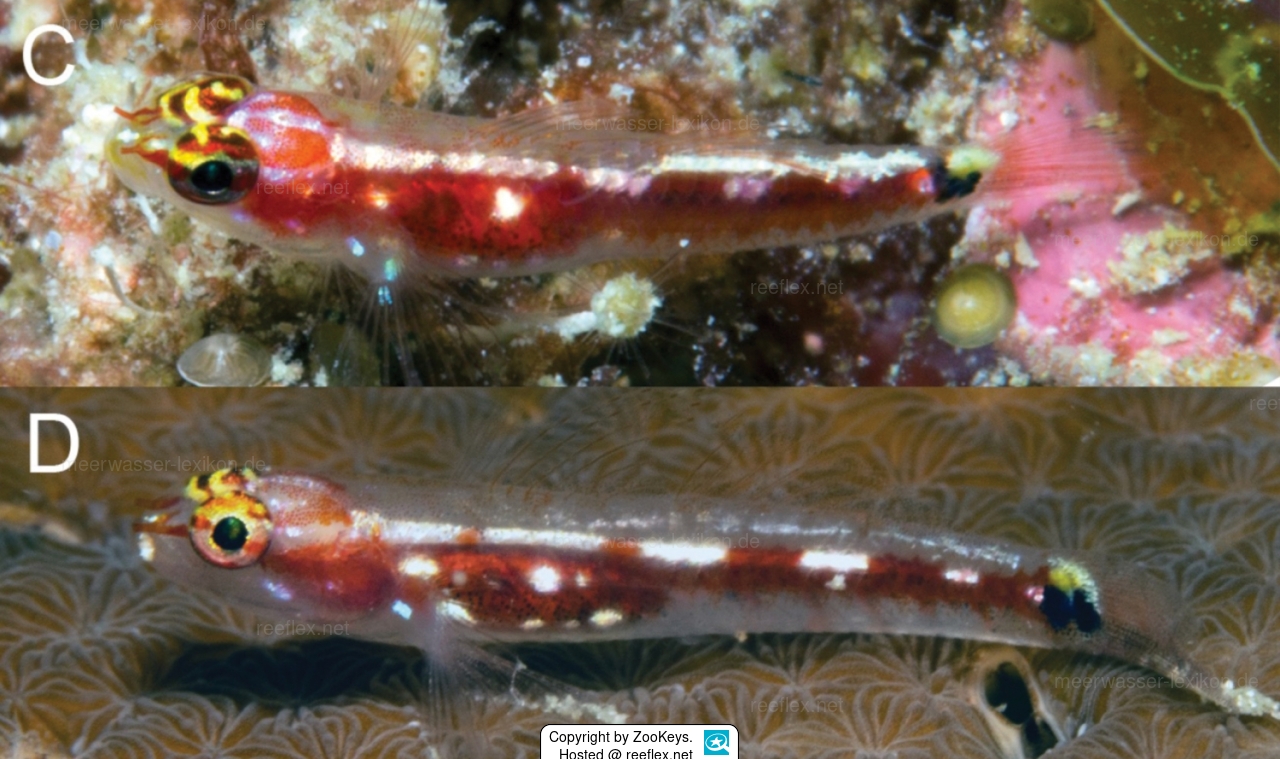Info
Eviota oculineata Tornabene, Greenfield & Erdmann, 2021
Currently known only from New Guinea and the Solomon Islands, but likely occurs in Fiji and the Banda Sea, Indonesia, and the Great Barrier Reef, Australia, based on live photographs as well as specimens previously identified as E. cometa that possess 8/7 counts in the dorsal/anal fins (Figure 12). The species seems to prefer outer reef slopes exposed to clear oceanic water in depths of 20–35 m and is frequently observed resting individually on coralline algae outcrops or live plate corals.
Main reference: A review of the Eviota zebrina complex, with descriptions of four new species (Teleostei, Gobiidae)
https://zookeys.pensoft.net/article/66675/
Inhabits rocky and coral reefs.
Jumping guard
A jumping guard prevents (nocturnal) fish from jumping out.
Wrasses, blennies, hawkfishs and gobies jump out of an unprotected tank in fright if their night rest is disturbed, unfortunately these jumpers are found dried up in the morning on carpets, glass edges or later behind the tank.
https://www.korallenriff.de/en/article/1925_5_Jump_Protection_Solutions_for_Fish_in_the_Aquarium__5_Net_Covers.html
A small night light also helps, as it provides the fish with a means of orientation in the dark!
Currently known only from New Guinea and the Solomon Islands, but likely occurs in Fiji and the Banda Sea, Indonesia, and the Great Barrier Reef, Australia, based on live photographs as well as specimens previously identified as E. cometa that possess 8/7 counts in the dorsal/anal fins (Figure 12). The species seems to prefer outer reef slopes exposed to clear oceanic water in depths of 20–35 m and is frequently observed resting individually on coralline algae outcrops or live plate corals.
Main reference: A review of the Eviota zebrina complex, with descriptions of four new species (Teleostei, Gobiidae)
https://zookeys.pensoft.net/article/66675/
Inhabits rocky and coral reefs.
Jumping guard
A jumping guard prevents (nocturnal) fish from jumping out.
Wrasses, blennies, hawkfishs and gobies jump out of an unprotected tank in fright if their night rest is disturbed, unfortunately these jumpers are found dried up in the morning on carpets, glass edges or later behind the tank.
https://www.korallenriff.de/en/article/1925_5_Jump_Protection_Solutions_for_Fish_in_the_Aquarium__5_Net_Covers.html
A small night light also helps, as it provides the fish with a means of orientation in the dark!







 ZooKeys
ZooKeys





































































































































